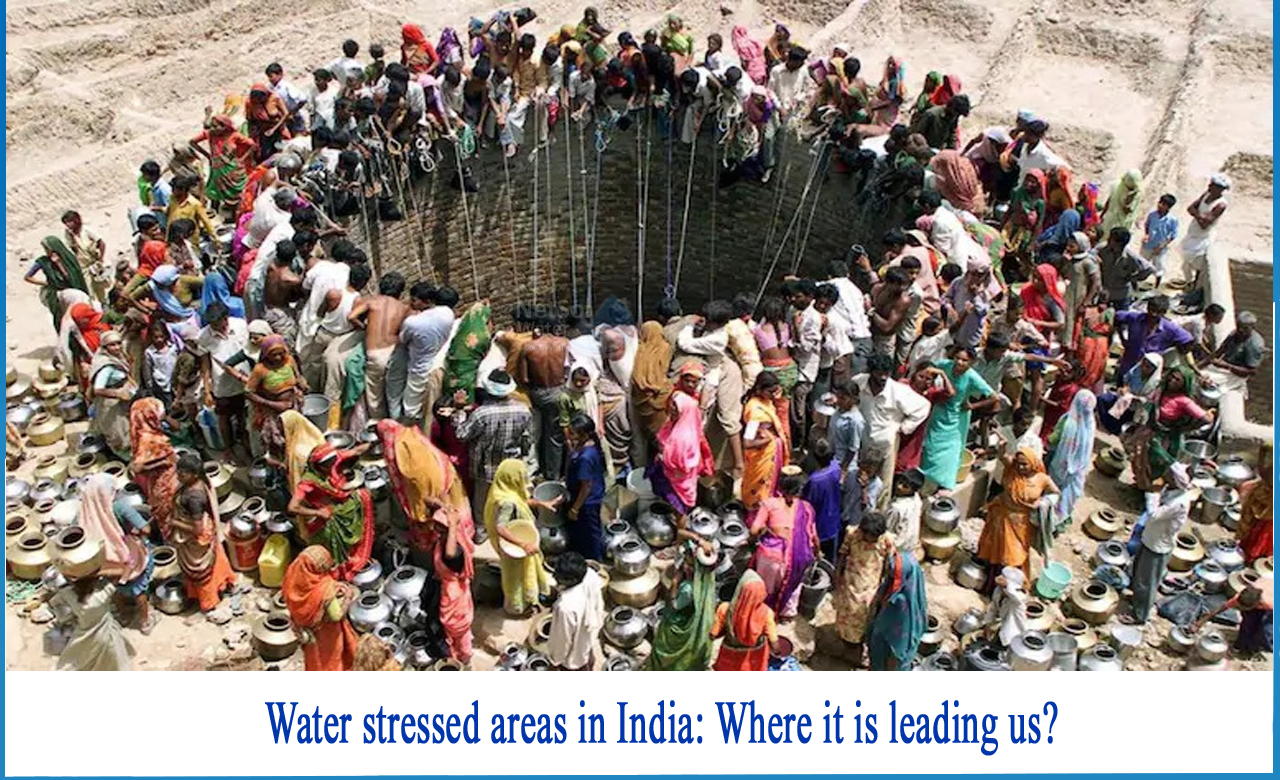Water scarcity is not a planetary phenomenon. This is the result of human intervention in the water cycle. It's not a warning to the future, it's happening now!
"Death from dehydration" is a reality of the world that claims to be civilized and progressive. Water scarcity is not limited. It is all over the world. Total water demand exceeds the available supply in accordance with general institutional and infrastructure agreements. UNESCO predicts that half of the world's population will live in water-polluted areas.
The World Resources Institute, based in Washington, has created a map showing the average exposure of water users in each country to basic water stress and the ratio of total water intake to total renewable energy in a particular region. Higher proportions mean that more water users are competing for limited water supplies. It is estimated that 33 countries will suffer from water stress by 2040.
How India is dealing with scarcity issues?
According to a NITI Aayog report entitled "Complex Water Management Index" (CWMI), India faces the "worst" water crisis in history, from dry to polluted water. Since 75% of households do not have drinking water connections on the premises, the water quality index forces them to rely on dedicated tankers, water bottles and taps. There are countless "unavoidable" causes that have led our country to water shortages.
Much of North India's water supply comes from natural resources such as rivers, streams and wells. According to a report published in LiveMint, up to 55% of India's total water supply comes from groundwater resources. Almost 30% of urban water supply and 70% of rural water supply come from groundwater. More than 60% of irrigation comes from groundwater, accounting for more than 85% of India's total water use.
A 2009 McKinsey report predicted that India could meet only half of its water needs by 2030. NASA reported in 2009 that the Indus River basin, including Punjab and Haryana, is the second most used aquifer in the world. According to the same study, the water table in Northern India drops by about 1 meter every three years. This is 20% more than the initial estimate by the Ministry of Water of India. Farmers in Northern India now tend to produce government-sponsored crops that make them good money. These crops, such as rice, are cultivated primarily in Punjab and Haryana.
India's water scarcity is projected to surge to 1.6 billion by 2050 and could be exacerbated. "Too many people and few water sources," has resulted into the conflict over the Kaveri River between Tamil Nadu and Karnataka, the Krishna River conflict between Maharashtra, Karnataka and Andhra Pradesh, and the Sutlej Yamuna Canal. Water conflicts have occurred repeatedly. The increase in water conflicts caused by the water crisis ultimately leads to "water war." Water, which connects land and the entire globe, may be the reason for its collapse due to the fragility of our international system.
A country's ability to efficiently manage and use water resources is based on good water policies, regardless of how severe the country is suffering from water scarcity or whether it will suffer from water scarcity in the future. Countries like Singapore and Israel have overcome the extreme waters of the past and have become self-sufficient with proper management of water resources.
In 2015, the World Resources Institute in Washington predicted that Singapore would face very high-water stress by 2040. Without its own aquifers and lakes, the country faced droughts, floods, and water pollution during the first years of nation-building. This growing problem has led the country to develop strategies for efficient water management. Despite the high-water stress areas, effective water management and conservation efforts demonstrate the country's ability to address water stress issues through proper water management. Even Israel has seen water shortages in the last few years that has moved Israel to develop intelligent and advanced water technologies. Since 2005, Israel has relied on wastewater recovery and desalination to provide uninterrupted water to homes, industry, and agriculture.
The water scarcity plague is sporadic and endemic. Because it is inevitable for the United States, the world's largest economy. In California, wet and dry years can occur at the same time. If 80% of the state's water consumption is used for agriculture, there will be a decrease in groundwater consumption and aquifers. The degree of water mismanagement is so great that a significant amount of water is lost even before use. In the United States alone, 2.1 trillion gallons of clean treated water is lost each year due to old leaks and broken water pipes. Countries with abundant water resources but poor water supply are lagging, especially when it comes to water infrastructure. This is primarily a governance issue.
Conclusion
"Water, water, everywhere, don't drink a single drop" best describes the economic shortage of water. Water is inaccessible not because water sources are not physically available, but because of lack of investment and infrastructure. Water scarcity is expected to worsen over time. The cause is artificial and can be predicted, avoided, or mitigated. It is important for governments to undertake macro-critical structural reforms for civilians to review their water consumption behaviour and launch a water-saving revolution that will only delay the imminent catastrophe caused by global water scarcity.




